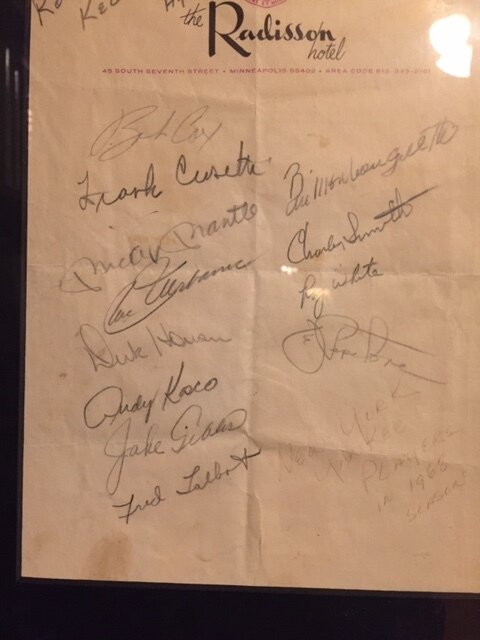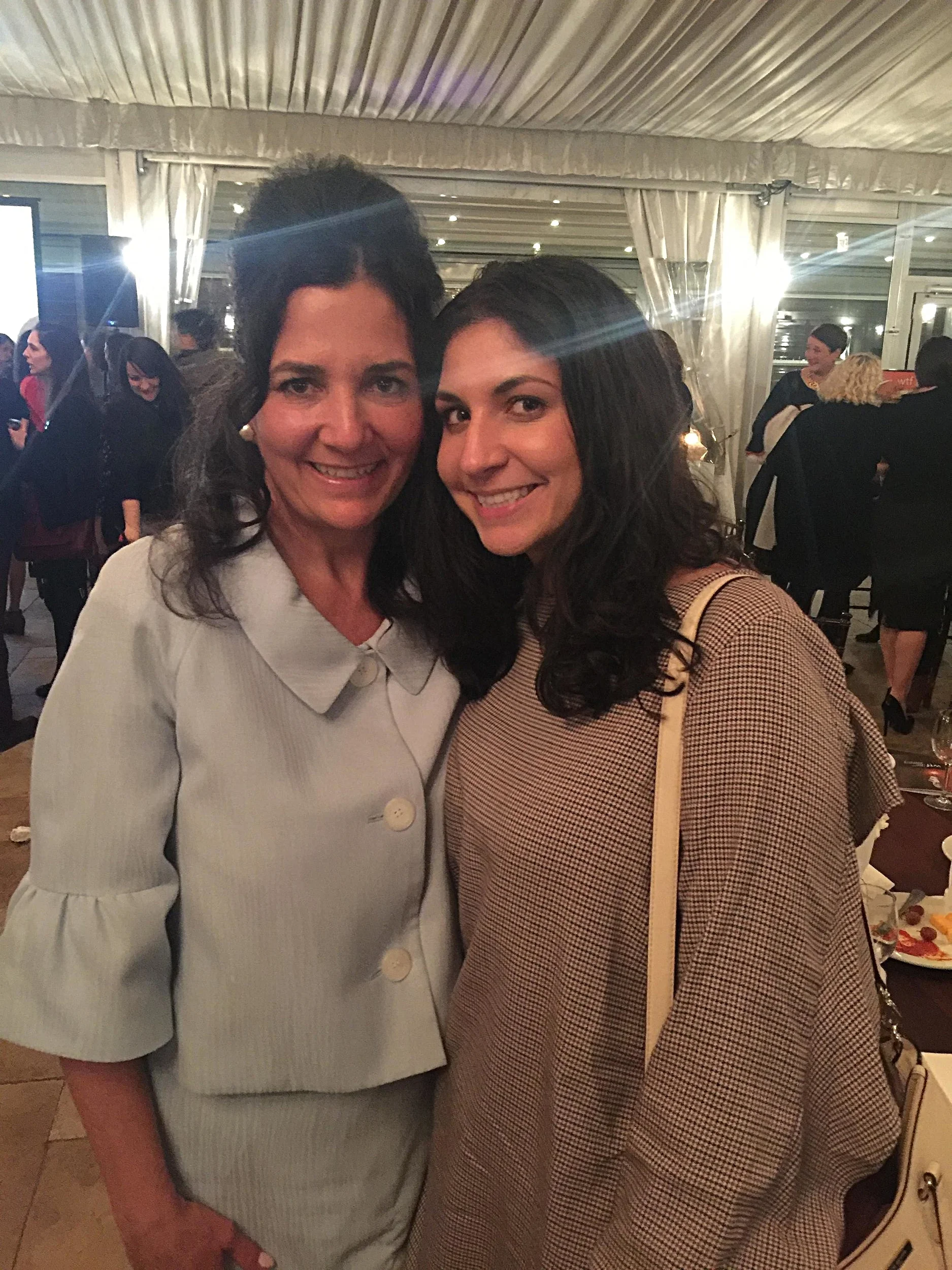His life story was big because he made his story about everybody else. They were the hero of his life story. Because of this, he became so unforgettable, the pharmacist at the local Jewel-Osco came to his wake.
Three days before Christmas.
My father, Frank Anthony LoDestro, taught me about the powerful storyline of life. Same goes for start-up founders. When you’re pitching an investor, your goal is to create believers, not just buyers of your idea. Our brains are hardwired for story.
Story is how we make pitches unforgettable — the golden ticket when it comes to asking for money.
I recently spoke about story at Investing in Women sponsored by Women Tech Founders — boss ladies of the tech world. Woot! Woot! A parade of start-up CEOs pitched to a panel of 10 investors.
The event was fab, of course, because it was chaired by Chicago’s InspiHER Tech Founder and career strategist rock star Laurie Swanson. (So great to have Katherine Kelly, my daughter, by my side, too!!!!)
What do I remember from the founder pitches? Their stories.
Charu Swaminathan, co-founder and CEO of Mishkalo, talked about how her company gives newlyweds an art alternative to traditional gift registry.
Shirley Yang of Muses shared her vision for the gig economy and her company is going to spur economic growth.
Deepa Kartha of Zinda told the story we are all familiar with — a man named “Ken” whose positivity was etched away by workplace disengagement and dismissiveness. Zinda increases employee engagement, a direct parallel to profit and, well, happiness.
And never, EVER will I forget founder Dana Todd of Balodana. Her company is bringing the dressmaker back through technology. She shared how menopause had created her squishy hamster-like shape (menopause is our greatest villain, gals!). Her imagery, her metaphors, her STORY was unforgettable.
There were more stories. I could go on. And, yes, as two investors pointed out at the end, numbers are key. They are in it, after all, to make a pile of money.
But if it was just the numbers, why pitch investors at all? Why not just submit the prospectus and be done with it?
Because people still do business with people. Whether you’re a VC, angel investor or institutional investor, human beings still make the decisions. Fact: The founder story is not the only reason investors say “yes,” but it does give the “why” behind the facts and data.
1. Believe in Your Story
You have to be all-in when it comes to your pitch. No self-limiting talk (like “I just wanted to run an idea by you” or “I know you may not be interested in this, but . . .”) or hesitation (you can’t sink the ball if you don’t take the shot). There’s a confidence gap between men and women. According to a Hewlett Packard internal report, men will happily apply for a promotion if they meet 60 percent of the criteria. Women feel they need to meet 100 percent of the criteria. Believe in your story — this is your “unique.” Nobody else has your narrative.
2. Keep Your Story in Your Back Pocket
You’ve got your investor deck and you think you’re all set? Fair enough. But this wouldn’t have helped Scott Ferreira and his sister Stacey who were at a party hosted by Sir Richard Branson. Scott says the “laid back and casual style” made it a lot easier to “talk openly” about his company. Less than a month later, Sir Branson and his partner Jerry Murdock invested in MySocialCloud. Be prepared to meet an investor anywhere — at the salon, in an elevator, at your child’s band concert.
3. Your Story Has a Hero
In your investor pitch, the hero of your story is your current/future customer. As human beings, the world revolves around us. When investors see that the market — customers you know inside and out — are the center of your story, you will gain attention posthaste. You are the GUIDE in your story. Ask: What superpower does your company give the hero to succeed?
4. Find the Conflict
If Rose Dawson from the movie The Titanic had boarded the big, fancy boat, enjoyed the shrimp cocktail and reached her destination, dripping with sparkling sapphires from her long, beautiful fingers, there would have been no story. Every great story has conflict. The antagonist of your story could be a situation, the plight of your customers if they don’t have your product/service, stunted growth for your growth-hungry company, less agility for your market, time suck for an entire legion of people, less options for the masses — whatever villain causes angst for your hero.
5. Pick Your Theme: Origin, Vision, Cause, Triumph, Innovation
Among corporate storytellers, controversy abounds around theme. In the latest edition of The Sophisticated Marketer, it cites seven main ones. A regular go-to article I love is by English author Grace Jolliffe who writes “A story without a theme is little more than a list of events.” She sites more than 20.
Story is so visceral and self-interpretive that I believe it’s up to the individual storyteller to decide. However, five powerful themes race to the top when it comes to pitching your investor story:
• Origin: There is a problem and the founders, who are the best equipped to solve it, know the path.
• Vision: I love this story theme and used it successfully for a client pitching an existing investor they wanted to tap for more. Start with the vision of your amazing new world made possible with the funding. Then fast forward to the present and the remarkable journey to making the vision real.
• Cause: There’s a problem that impacts people’s lives, triggered by an antagonist that isn’t going away (and is probably going to get worse), that leads to a face-off between your customers and the big, bad villain and BOOM! Your company can help the customer survive/leap/escape/grow/heal/love life/innovate better/be more productive/etc.
• Triumph: The triple crown. You are solving the customer’s external (the obvious one), internal (what keeps them up at night) and philosophical problems (making the larger world a better place).
• Innovation: There’s nothing out there like it. Time to turn the market upside down.
6. When Culture and Brand Tango
Include a line or two showing an investor two worlds: culture (how people inside your organization will/are talking and thinking about your company) and brand (how people outside your organization will/are talking and thinking about your company).
7. Know Your “Why”
The “why” god Simon Sinek has this point covered. Pay him homage. He says: “Always build your story from the inside out, starting with the WHY.” Here are the hurdles: leap beyond WHAT you do, put HOW you do it on hold, and get to the meat with an investor: WHY your business idea is so fantastically important for your customers, the financiers and the world at large.
8. CAR: Context, Action, Result
A great book on business storytelling comes from Lead With A Story by former Proctor and Gamble exec Paul Smith. He has this formula called CAR: context, action, results. It’s an easy way to assemble your story (I learned this concept from Orbit Media co-founder/CMO and Chicago content rock star Andy Crestodina who writes killer blogposts. He wrote something along the lines that great stories aren’t written, they are assembled. I’ve never forgotten this).
Context is your business backstory. Action is the conflict — the highest point of tension where you customers are battling their nemesis. The results come by way of the amazing new world you create with your business idea and how you’ve resolved your customer’s angst.
9. Last Words About Your Logline (Your 10-Second Pitch)
Every movie has a logline, it’s one sentence that sums up the screenplay. Movies have been bought and sold on these one-liners. They are short, clear and — have a shade of emotion.
Your investor story has a logline too.
Your homework: Pretend you are attending a favorite event (for me, this might be La Traviata at the Lyric Opera or a front row seat at a Lana Del Rey concert), and your seat happens to be right next to a potential investor.
Idle chit chat ensues. Your heart has more reverb than the music. This is your BIG chance. Afterward, you are eye-to-eye with the investor. You say: “There’s a reason we met tonight. When you hear the story behind my company, you will be absolutely amazed what a great fit we can be. I give (your hero) the (superpower) to rise above (conflict). We’re changing the world here for (your hero) and it’s important because (your why). When can we talk?”
Then schedule that call/meeting and choose a theme to pitch your longer narrative.
Your investor pitch will be epic. Just like the many stories you’ve heard in your life — and never forgotten.
















